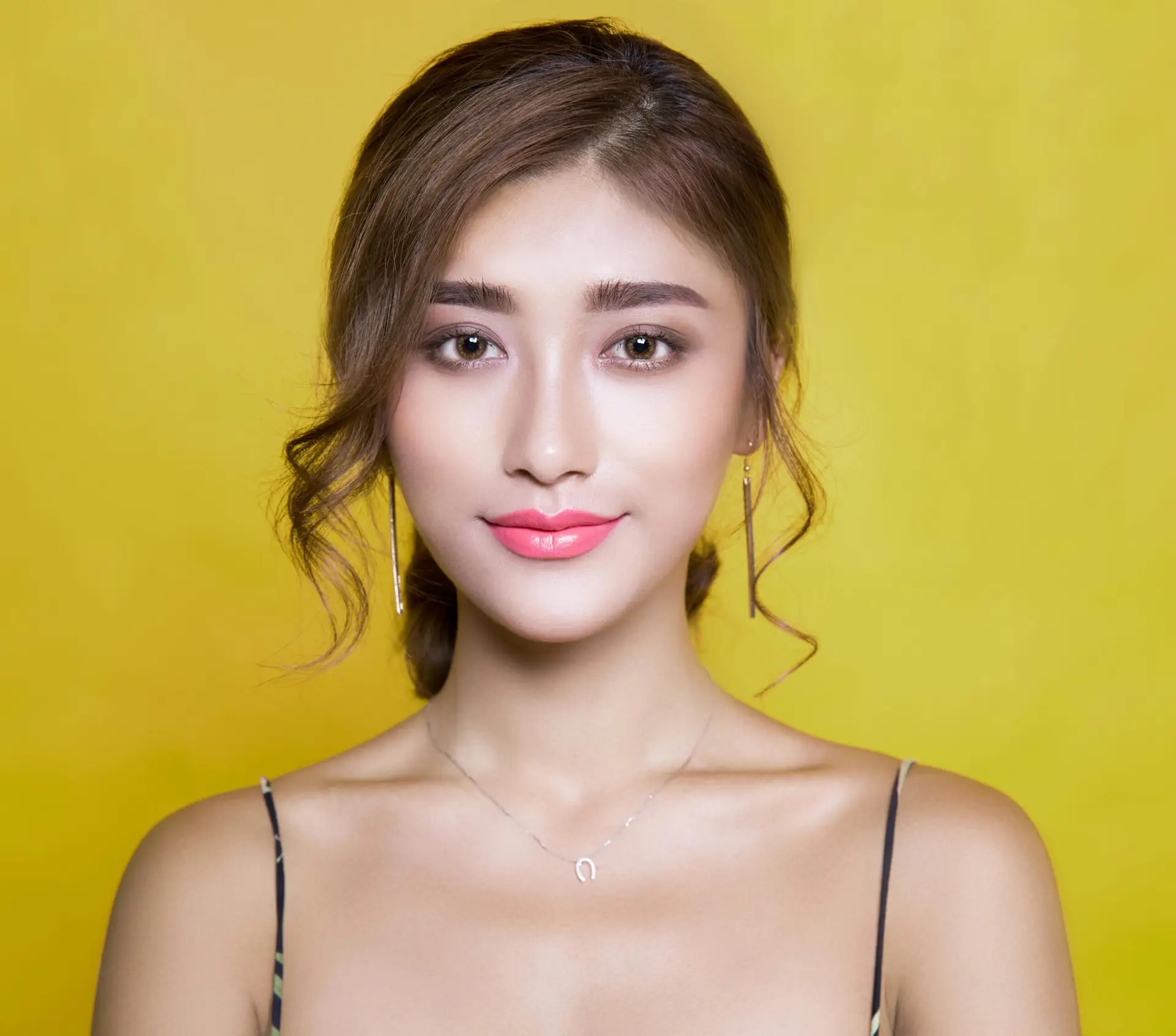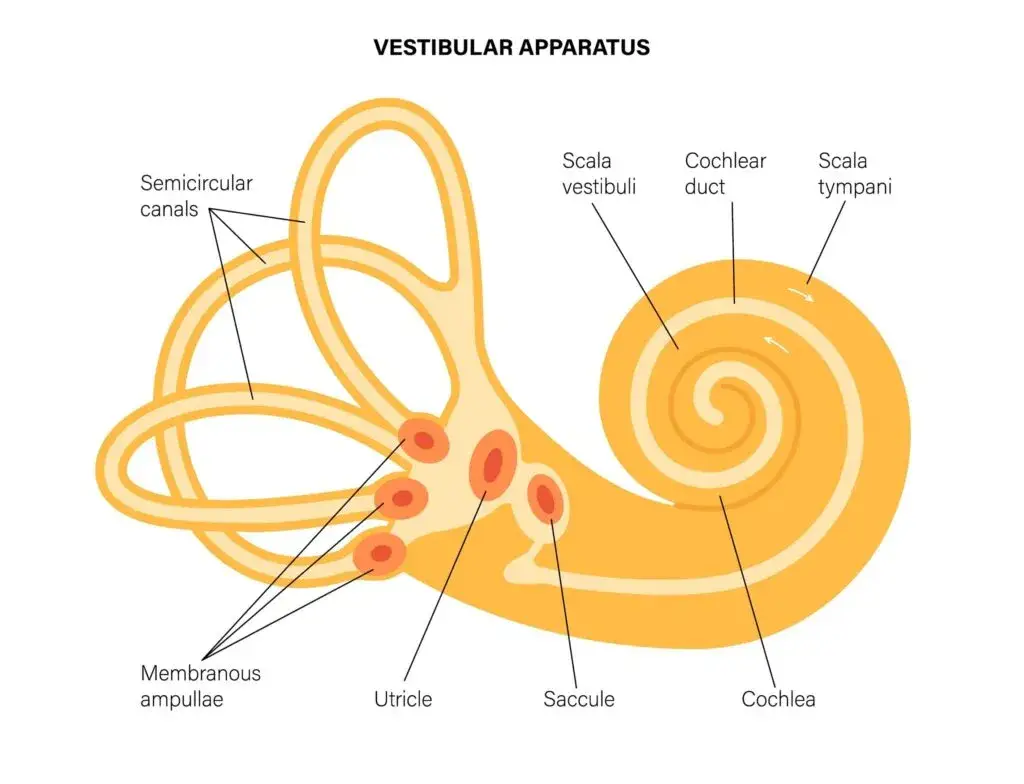
Facial pain hits different. It isn’t just discomfort—it’s the moment you hesitate before you smile, the bite you avoid because chewing might trigger a jolt, the conversation you cut short because your jaw aches or your eye won’t blink the way it should. For many people across Sarasota, Bradenton, and Lakewood Ranch, facial pain becomes a mystery that lingers: dentists say it’s not your teeth, ENTs say it’s not your sinuses, neurologists run scans that don’t tell the full story, and medications blunt symptoms but never seem to restore normal life.
If you’ve asked, “Why does my face hurt?” you’re not alone. Common answers include trigeminal neuralgia, Bell’s palsy, facial nerve paralysis, and TMJ dysfunction—but the root cause is often overlooked: upper cervical misalignment at the top of the neck (the atlas and axis vertebrae, C1 and C2). This region protects the brainstem and influences the cranial nerves that control sensation and movement of the face. When it’s misaligned—even by millimeters—it can disturb nerve signaling, blood flow, and cerebrospinal fluid (CSF) dynamics, creating the perfect storm for pain and dysfunction.
At Lavender Family Chiropractic in Sarasota, Florida, our three-doctor team—Dr. Rusty Lavender, Dr. Jacob Temple, and Dr. Will Guzinski—specializes in upper cervical chiropractic. We use 3D CBCT imaging and Tytron infrared thermography to find precise misalignments and correct them with gentle, specific adjustments (no popping, twisting, or cracking), often using the Advanced Knee-Chest approach. The goal is simple and powerful: remove interference, restore communication, and let your body do what it’s designed to do—heal.
Below, we’ll walk you through the major causes of facial pain, how the upper neck ties them together, what our step-by-step care looks like, and how people from Sarasota, Bradenton, Lakewood Ranch, and beyond are finding real relief—often after years of frustration.
Facial Pain-The Hidden Anatomy: Where the Face Meets the Neck
Your facial comfort relies on a beautifully orchestrated network of nerves, muscles, blood vessels, and connective tissues. Two nerves deserve the spotlight:
The Trigeminal Nerve (Cranial Nerve V): Your Face’s Sensory Powerhouse
- What it does: Carries sensation (touch, temperature, pain) from the face, teeth, and sinuses; powers chewing muscles.
- Three branches:
- V1 (Ophthalmic): Forehead, scalp, eye region.
- V2 (Maxillary): Cheeks, upper jaw/teeth, sinuses.
- V3 (Mandibular): Lower jaw/teeth and chewing muscles.
- Where it begins: The trigeminal nucleus in the brainstem, which sits immediately above the atlas (C1). Any mechanical or functional irritation near the upper cervical spine can influence how this nucleus processes signals, sometimes turning normal input (like a breeze) into pain.
The Facial Nerve (Cranial Nerve VII): The Expression Expert
- What it does: Controls facial expression (smile, frown, blink), contributes to taste (front two-thirds of the tongue), and supports tear/saliva glands.
- Where it begins: The brainstem as well. Its delicate fibers depend on clear signaling and stable fluid/blood flow through the same “high-rent district” at the skull-neck junction.
Why the Upper Cervical Spine Matters So Much
- Atlas (C1) & Axis (C2): These vertebrae cradle the brainstem and guide the movement of the head. Because they are designed for motion, they are also more vulnerable to subtle misalignments from past injuries (whiplash, sports collisions, falls), repetitive postures (tech neck), or even birth trauma.
- Potential consequences of misalignment:
- Neural irritation to the trigeminal and facial nerve centers.
- Autonomic dysregulation (fight-or-flight overdrive) that heightens pain sensitivity.
- Altered blood/CSF flow through the vertebral and jugular systems, impacting nerve nutrition, inflammation, and healing.
- Muscle imbalance from the neck down to the jaw and face, disturbing bite mechanics and TMJ loading.
When patients ask, “Why is my face doing this?” a smart, often-missed answer is: “Because your neck is trying to tell you something.”
Trigeminal Neuralgia (TN): When Facial Sensation Becomes Lightning
Trigeminal neuralgia is notorious for a reason. Patients describe it as electric shock, stabbing, or knife-like pain—usually on one side of the face. Even a whisper of wind, brushing your teeth, or chewing can trigger an attack that stops you in your tracks.
Common Features of TN
- Sudden, severe, shock-like pain episodes—seconds to minutes, often in clusters.
- One-sided facial distribution following V1, V2, or V3.
- Triggered by everyday activities (talking, smiling, eating) or light touch.
Why It’s Often Misunderstood
- People chase dental extractions or root canals that don’t solve the pain.
- Sinus treatments fail because the problem isn’t in the sinus.
- Medications (like anticonvulsants) may blunt episodes but can bring fatigue, fogginess, or tolerance.
The Upper Cervical Connection
The trigeminal nucleus lives where your brainstem meets your spinal cord. If the atlas is misaligned, pressure or tension in this area can feed a constant stream of “irritation” into the trigeminal system, priming it to misfire. This is especially common after whiplash, contact sports, or falls—even if those injuries happened years ago.
What we do at Lavender Family Chiropractic:
- 3D CBCT maps the atlas and axis in three dimensions to see the exact angle and direction of misalignment.
- Tytron infrared thermography measures real-time autonomic nerve irritation along your spine.
- Advanced Knee-Chest correction restores alignment without twisting or cracking.
- Objective follow-ups (post-scans, improved thermographic symmetry, and symptom tracking) confirm that the trigeminal system is calming down.
What patients often report: fewer and milder attacks, longer pain-free windows, and—over time—confidence returning to eat, talk, and live without fear.
Bell’s Palsy & Facial Nerve Paralysis: When Your Smile Won’t Listen
Bell’s palsy often arrives out of nowhere: one side of your face droops, your eye won’t close, your smile is uneven, food catches in your cheek, and your words feel thick. It’s scary—and it’s personal.
Classic Signs
- Unilateral facial weakness or paralysis.
- Difficulty closing the eye, smiling, or keeping food in your mouth.
- Altered tearing or taste, sometimes ear or jaw discomfort on the affected side.
What You’re Usually Told
Medicine often points to a viral trigger and inflammation of the facial nerve. Steroids or antivirals may reduce swelling, and many people recover—but timelines vary widely. Some have lingering weakness or synkinesis (nerves reconnecting “out of sync,” causing tightness or twitching).
Why Upper Cervical Alignment Still Matters
The facial nerve emerges from the brainstem—and the brainstem is exquisitely sensitive to mechanical stress and fluid/blood dynamics at the skull-neck junction. An atlas misalignment can:
- Disrupt venous drainage and CSF flow.
- Create autonomic imbalance (sympathetic overdrive), worsening inflammation.
- Influence how the facial nucleus signals muscles on the affected side.
Our approach: Restore alignment, reduce brainstem irritation, and support your body’s ability to resolve inflammation and re-establish normal nerve firing. Patients commonly describe improved eye closure, smoother smile symmetry, and less facial fatigue as stability returns.
TMJ Dysfunction: When the Jaw, Neck, and Nervous System Collide
TMJ (temporomandibular joint) problems aren’t only about teeth or bite. For many, the neck is the missing chapter.
TMJ Symptoms That Steal Joy
- Clicking/popping with opening or chewing; jaw deviation or locking.
- Ear fullness, temple pain, or tenderness in the jaw muscles.
- Headaches that won’t quit, especially after talking or stress.
- Stiffness on waking, bruxism (grinding), or “my face just feels tight.”
Beyond Splints and Night Guards
Dental appliances can protect enamel, but if neck-driven muscle imbalance is constantly tugging the jaw off-track, splints become band-aids. Upper cervical misalignment can alter the tone of the muscles of mastication (through trigeminal pathways) and head posture, changing how the TMJ is loaded with each bite.
What stabilization looks like with upper cervical care:
- Atlas correction balances head-on-neck posture.
- Jaw muscles regain symmetry, easing strain on the articular disc.
- Chewing becomes fluid, clicks soften or disappear, morning tightness fades.
When the neck stabilizes, the TMJ often thanks you.
Other Facial Pain Syndromes We See—And Why They Improve When the Neck Does
Facial pain wears many masks. Here are additional conditions that frequently tie back to the upper cervical spine.
Occipital Neuralgia
Pain starts at the base of the skull and radiates forward, sometimes behind the eye. Irritated occipital nerves (C2-C3) and upper cervical tension are classic drivers. Align the atlas, calm the storm.
Atypical Facial Pain / Persistent Idiopathic Facial Pain
Diffuse, aching, puzzling pain that resists dental and ENT solutions. When imaging is “clean,” the nervous system itself is often the culprit. Brainstem regulation through upper cervical correction can reduce hyper-sensitization.
Post-Herpetic Facial Pain
After shingles in the trigeminal distribution, the nerve can remain fired-up. While we don’t treat the virus, restoring optimal nerve environment (blood/CSF flow, autonomic balance) often lessens the intensity and frequency of pain signals.
Post-Concussion Facial Issues
Concussions frequently shift the atlas. Months later, patients still have facial pressure, headaches, jaw tightness, or eye strain. Correcting alignment helps the brain and cranial nerves “breathe” again—many describe clearer thinking and calmer faces.
Sinus-Like Facial Pressure (That Isn’t Purely Sinus)
If antibiotics and decongestants don’t touch it, consider the neck. Autonomic imbalance can affect mucosal function and drainage; muscular tension can refer into the face. Upper cervical correction reduces the noise so true sinus problems—if present—can be addressed more effectively.
How Upper Cervical Misalignment Creates Facial Symptoms (In Plain English)
Think of the brainstem as a fuse box and the atlas as the panel cover. If the panel cover is askew, switches can be bumped, wires strained, and circuits heated.
- Cranial nerve signaling: Misalignment near the brainstem can irritate nuclei for the trigeminal and facial nerves, amplifying pain or weakening muscle control.
- Autonomic balance: Chronic stress in the upper neck can lock the body into a mild fight-or-flight state, turning normal sensations into discomfort (sensitization).
- Blood and CSF flow: Smooth inflow (vertebral arteries) and outflow (jugular veins) plus CSF circulation are essential for nerve health. Poor mechanics = poor housekeeping.
- Muscular chains: Head-on-neck posture influences jaw mechanics, shoulder tone, even how you swallow. A crooked start creates crooked finish lines.
When we restore alignment, we’re not “cracking a neck.” We’re re-centering the control tower so your facial systems can coordinate the way they were designed to.
The Lavender Family Chiropractic Process: Precise, Gentle, Measurable
People come to us searching “chiropractor Sarasota Florida,” “upper cervical chiropractor near me,” “chiropractor near me,” “Vertigo doctor near me,” or “Migraine doctor near me,” and discover that facial pain is often a neurological story we can help rewrite.
1) Conversation and Listening
Your story matters. We map every trigger, episode, and prior treatment to spot patterns others missed.
2) NeuroStructural Examination
Posture, range of motion, balance testing, and neurology screens help us see how your body is compensating.
3) 3D CBCT Imaging
Cone Beam CT shows atlas/axis alignment from multiple angles in three dimensions. This isn’t a guess; it’s geometry we can measure.
4) Tytron Infrared Thermography
A gentle sensor glides along your spine, capturing autonomic nerve patterning. It’s a functional window into irritation and symmetry.
5) Advanced Knee-Chest Upper Cervical Adjustment
You’ll notice what you don’t feel—no popping, no twisting, no cracking. The correction is light, specific, and targeted to your CBCT analysis.
6) Rest & Re-Check
After an adjustment, we allow time for your nervous system to “download” the change. Then we re-scan to confirm improvements.
7) Stabilization Plan
Precision corrections are designed to hold, not be repeated endlessly. We teach you how to support alignment with tailored home strategies.
Our promise: gentle, precise care, constant measurement, and full transparency about your progress.
Living in Your Body Again: What Improved Alignment Feels Like
Patients often describe benefits that go beyond their original complaint:
- TN patients: longer gaps between flare-ups, less intensity, ultimately “I forgot to be afraid of chewing.”
- Bell’s palsy patients: better eye closure, smoother smile symmetry, less fatigue when talking, improved confidence.
- TMJ patients: quieter joints, fewer headaches, no morning lock, normal meals again.
- Post-concussion patients: clearer thinking, steadier eyes, less face pressure.
Relief isn’t just fewer symptoms—it’s getting your life back.
Your Role in Healing: Simple Habits That Protect the Upper Cervical Spine
We’ll guide you with specifics, but here are common game-changers:
- Sleep alignment: Side sleeping with a supportive pillow that keeps your neck neutral; avoid high stacks of pillows.
- Desk breaks: Micro-breaks every 30–45 minutes; screens at eye level; hips back in the chair to avoid chin-forward posture.
- Jaw awareness: Keep teeth apart at rest; tongue on the palate; avoid habitual clenching.
- Hydration & movement: Joints and nerves love fluid and motion. Short walks add up.
- Stress decompression: Breath work, gentle mobility, and consistent routines calm the autonomic system that modulates pain.
Alignment + habits = stability that lasts.
Expanded Patient Stories
Case A: Six Years of TN, Finally Quiet
A Lakewood Ranch professional lived in fear of her toothbrush. CBCT showed an atlas rotated and laterally shifted; Tytron revealed a consistent stress pattern. After a series of gentle corrections, her shock-like episodes shrank to brief zaps, then faded. She now schedules “life things”—meals out, photos with family—without calculating risks.
Case B: Bell’s Palsy After a Cold
A Sarasota dad woke up with a lopsided smile and an eye that wouldn’t close. He followed his physician’s steroid plan and added upper cervical care. As his alignment stabilized, facial tone returned, blinking normalized, and speech fatigue disappeared. He calls it “getting my face back.”
Case C: TMJ, Headaches, and the Neck No One Checked
A Bradenton teacher tried bite guards, muscle relaxers, and PT. CBCT revealed a clear atlas listing; after specific corrections and a few simple habit changes, her jaw clicks softened, headaches lifted, and the morning grind vanished.
These stories are common themes we see every week. The details vary; the pattern—neck-brainstem-face—doesn’t.
FAQs: Your Top 15 Questions—Answered in Depth
1) Can upper cervical chiropractic really help trigeminal neuralgia?
Yes—when TN is fueled by irritation around the brainstem or altered autonomic tone, correcting atlas alignment can dial down the misfiring at the trigeminal nucleus. We’re not masking symptoms; we’re working to restore a calm environment for nerves to function normally. Many patients reduce reliance on medications (with their doctor’s guidance) as the nervous system steadies.
2) How is upper cervical care different from regular chiropractic?
Most chiropractic focuses on global spinal motion. Upper cervical is a subspecialty that targets the most neurologically dense segment—C0-C1-C2. We use 3D CBCT to plan corrections with millimeter precision and Tytron to verify functional changes. Fewer adjustments, more specificity, longer holds.
3) Is the adjustment safe? Will it hurt?
It’s gentle and precise, designed to be comfortable. There is no twisting or “cracking.” Most people are surprised by how light the correction feels—and how profound the results can be.
4) How soon will I feel better?
It depends on your history, severity, and how long the problem has been present. Some feel relief quickly; others improve steadily over weeks as their nervous system re-calibrates and holds alignment. We track objective markers so you see progress even before your symptoms fully catch up.
5) I tried everything for TMJ. Why would my neck be the key?
Your jaw doesn’t live in isolation. Trigeminal pathways, postural reflexes, and neck muscle tone all influence how the TMJ loads. If the upper neck is off, the jaw often compensates. Align the atlas, balance the system, and the TMJ can finally behave.
6) Bell’s palsy—shouldn’t I just wait it out?
Many recover, but recovery can be faster and more complete with a brainstem-friendly environment: clear alignment, balanced autonomics, and good fluid dynamics. Upper cervical care creates conditions that encourage better nerve healing while you follow your physician’s plan.
7) What if my MRIs and CT scans are “normal”?
Traditional imaging often misses functional problems. That’s why we combine 3D CBCT (to see alignment) with thermography (to see nerve stress patterns). Pain without findings isn’t “in your head”—it’s often in your neck’s mechanics.
8) Do you treat children or seniors?
Yes. Our approach is adapted to every age and stage. Children with facial tics or jaw clenching patterns often respond beautifully; seniors appreciate the gentle nature of the technique.
9) How long will I need care?
Our goal is stability, not endless “cracking.” In the beginning, corrections may be more frequent; as you hold alignment, visits space out. Many patients choose periodic wellness checks because they enjoy how their body functions when the head and neck are balanced.
10) Can I stop medications?
Never stop or change medications without speaking to your physician. That said, many patients find they need less as their nervous system calms and symptoms recede. We’re happy to coordinate care with your medical team.
11) What results are realistic?
We’ve seen dramatic improvements in TN, TMJ, and Bell’s palsy patterns—but we never overpromise. We present your objective findings, provide precise care, and track progress transparently. The aim is powerful and practical: less pain, more function, a steadier you.
12) What makes Lavender Family Chiropractic different?
Three-doctor team for collective expertise; state-of-the-art 3D CBCT to plan; Tytron to monitor; Advanced Knee-Chest corrections that respect the body’s engineering; and a people-first approach. We pair precision with encouragement.
13) Do you take insurance?
Our office is out of network with insurance. Many of our patients receive a superbill to submit to their insurance for reimbursement based on their coverage. We offer many different payment options as well as finance options.
14) I’m nervous about chiropractic. Can we go slowly?
Absolutely. You set the pace. We explain every step, show you your scans, and only proceed with what you’re comfortable with. Most patients are relieved by how gentle upper cervical care feels.
15) How do I get started?
Call (941) 243-3729 or visit www.chiropractorsarasotaflorida.com to request your consultation. We’ll listen, measure, and map a plan that makes sense for you.
Who We Serve (and Why People Drive to See Us)
We proudly care for families and professionals from Sarasota, Bradenton, Lakewood Ranch, Parrish, Ellenton, Venice, Osprey, Punta Gorda, St. Petersburg, Siesta Key, Longboat Key, Lido Key, and Myakka City—and we regularly see patients who travel from elsewhere in Florida to access upper cervical chiropractic that is both high-tech and hands-on.
Our clinic is easy to reach at 5899 Whitfield Ave Ste 107, Sarasota, FL 34243—close to the amenities people love: UTC, world-class beaches, and neighborhoods where life is meant to be enjoyed, not managed around facial pain.
Why Choose Upper Cervical Chiropractic for Facial Pain—Now
- It’s precise. 3D CBCT shows us exactly what to correct.
- It’s gentle. No twisting or cracking; specific corrections that respect the nervous system.
- It’s functional. We don’t chase symptoms; we restore control at the source.
- It’s measurable. Thermography, posture, scans, and how you feel—tracked together.
- It’s hopeful. When you’ve tried everything, a new perspective matters.
If you’ve been searching “upper cervical chiropractor near me,” “chiropractor Sarasota Florida,” or simply “why does my face hurt?”, we’d be honored to help you reconnect the dots—and rediscover your smile.
Ready to Start?
Lavender Family Chiropractic
5899 Whitfield Ave Ste 107, Sarasota, FL 34243
Call: (941) 243-3729
Website: www.chiropractorsarasotaflorida.com
Instagram: @lavenderfamilysrq • TikTok: @drrustylavender
Lavender Family Chiropractic in Sarasota Florida offers complimentary consultations to learn more about you. Click the link below!
https://intake.chirohd.com/new-patient-scheduling/724/lavender-family-chiropractic
Visit our Website!
To learn more about us go to http://www.chiropractorsarasotaflorida.com
We also service Bradenton, Parrish, Ellenton, Ruskin, Venice, Tampa, St. Pete, Osprey, Longboat, Lakewood Ranch, Myakka City.
If you are in Tampa, Fort Myers, or Salt Lake City, you can visit my other locations! NeckWise Upper Cervical. Visit, www.neckwise.com
If you are not local, visit www.uccnearme.com to find a doctor in your area.
Complimentary consultations are available. Bring your questions, your history, and your hope. We’ll bring the precision, the plan, and the encouragement to see it through.





